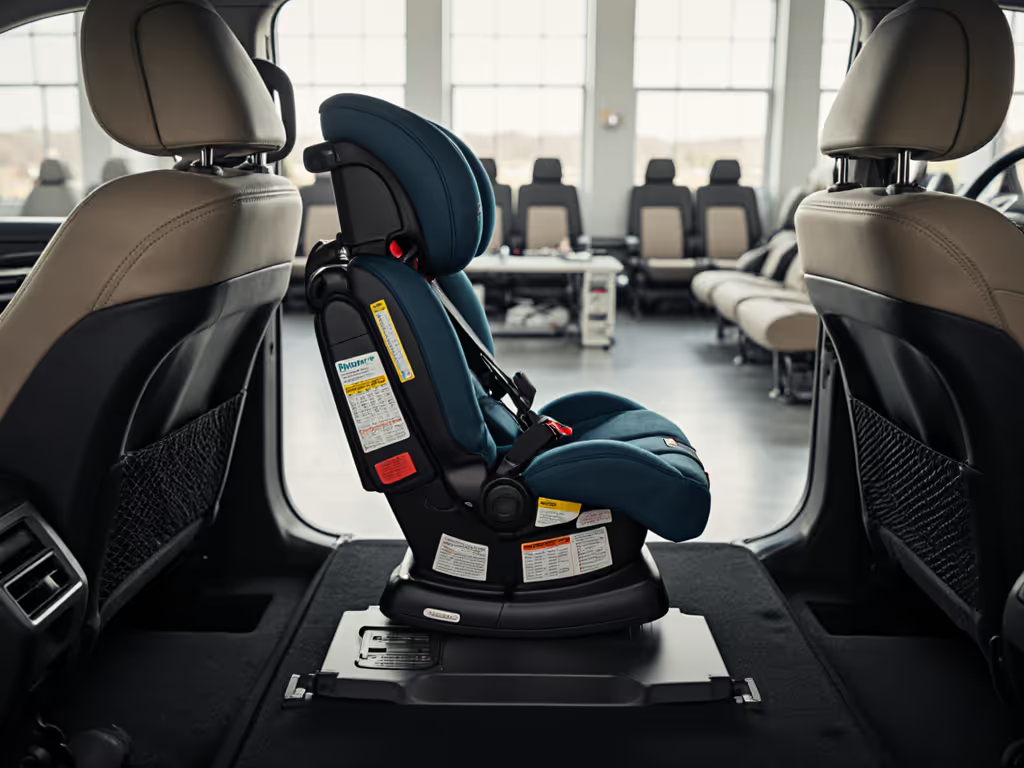
Car Seat Crash Performance: Frontal vs Side Test Data
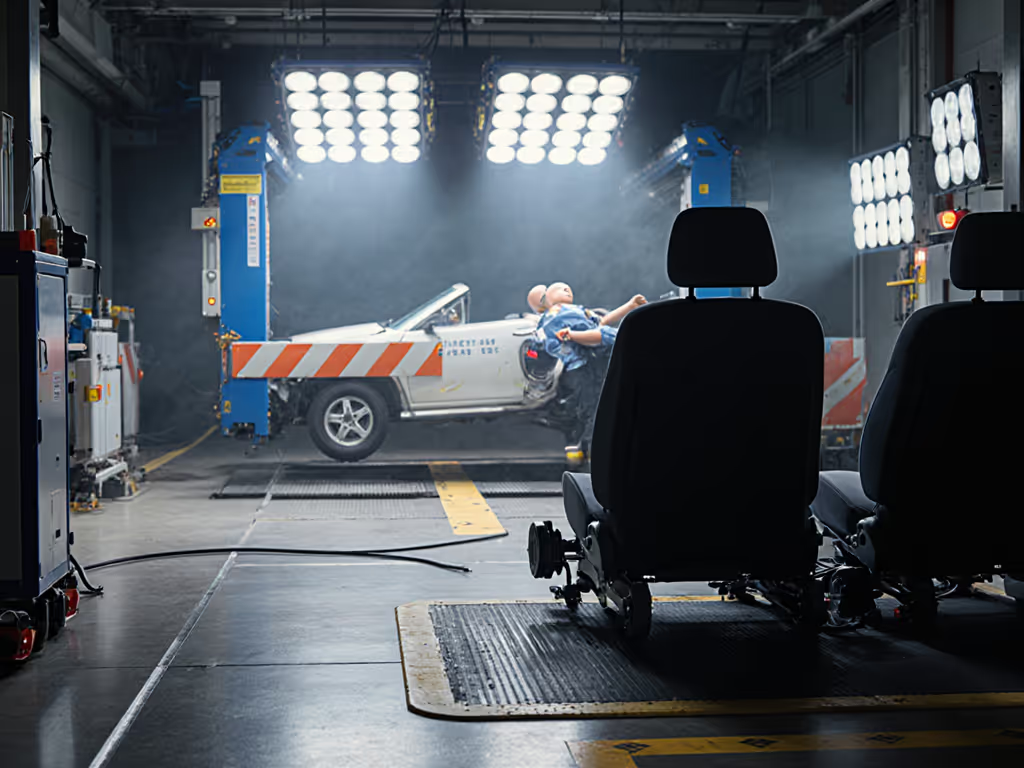
As parents evaluate car seat crash performance comparison metrics, they're often confronted with conflicting information about which safety features truly matter. When analyzing safety testing across car seat types, the reality is that frontal and side impact protection operate under fundamentally different physics, and understanding these distinctions is critical for making informed decisions. Longevity lives in harness height, but safety is engineered through geometry that performs consistently across both impact scenarios. After years of modeling child growth trajectories and seat performance data, I've learned that harness height, shell depth, and honest geometry aren't just marketing terms. They are measurable factors that determine how well a seat will protect your child through multiple growth stages and varied crash scenarios.
Understanding Crash Testing Methodologies
How do major safety organizations test car seats differently?
NHTSA's standard frontal crash tests simulate collisions at 31 mph (50 km/h), but independent organizations like ADAC push these limits further. As documented in recent ADAC testing (Spring 2024), they simulate frontal collisions at 40 mph (64 km/h) and side collisions at 31 mph (50 km/h) (significantly exceeding regulatory minimums). Crucially, ADAC tests use:
- The chassis of a real Volkswagen Golf rather than a test sled
- Advanced Q-series test dummies with far more sensors than regulation requires
- Comprehensive evaluation of materials for harmful substances
This rigorous approach reveals performance gaps that standard testing misses. For example, ADAC's three-part scoring system (50% Safety, 40% Operations, 10% Ergonomics) captures critical real-world factors that pure crash performance metrics overlook. A seat might perform well in a frontal crash but prove difficult to install correctly, which is a critical flaw since misinstallation is the most common safety failure in car seats. For step-by-step setup across different vehicles, see our vehicle-tuned installation guide.
Why aren't frontal crash ratings directly comparable across all vehicles?
NHTSA categorizes vehicles by class and weight, meaning frontal crash ratings can only be compared within the same weight class (plus or minus 250 pounds). This matters because in a real-world collision between two vehicles of different weights, the lighter vehicle sustains significantly greater forces. Rollover ratings, however, are comparable across all classes since they measure a vehicle's resistance to tipping rather than interaction with another vehicle.
Critical insight: Your car's safety ratings matter as much as your car seat's. A top-rated seat in a poor-rated vehicle creates a weak link in your safety chain.
Frontal vs Side Impact Performance Data
What does "low risk of injury" actually mean in test results?
When ADAC reports "low risk of injury" in both frontal and side crashes (as seen in the Cybex Cloud G and Sirona G i-Size models), they're translating complex biomechanical data into practical guidance. Their test dummies measure:
- Head injury criteria (HIC) values below 500
- Chest acceleration under 60g
- Neck forces within safe thresholds
These metrics matter more than marketing claims about "advanced" side impact protection. In fact, the geometry of the shell, particularly shell depth and torso containment, proved more influential than add-on features in preventing head and torso impact with vehicle structures during side collisions.
How do convertible seats perform differently in frontal versus side impacts?
Based on crash testing data from organizations like Baby Gear Lab (which has tested over 100 seats since 2014), convertible seats demonstrate key performance differences:
| Impact Type | Critical Performance Factors | Common Failure Points |
|---|---|---|
| Frontal | Harness tension maintenance, energy absorption through seat structure | Premature harness loosening, inadequate energy dissipation |
| Side | Shell depth, side impact protection geometry, torso containment | Head contact with vehicle door, torso rotation during impact |
The seats that excelled across both impact types shared common geometrical traits: deeper shells (measuring torso containment beyond just head protection), stable base structures that maintained position during impact, and harness routing that prevented slack accumulation. These aren't "premium" features. They are honest geometry that provides measurable safety benefits.
Practical Implications for Parents
How should parents interpret safety ratings for their specific situation?
Don't get lost in star ratings alone. Instead, create percentile-aware charts that map your child's current measurements against the seat's usable ranges. For example, if your 18-month-old is at the 90th percentile for height, a seat with only 15" of rear-facing harness height will likely outgrow them before their second birthday, regardless of weight limits. To compare options, see our longest rear-facing seats ranked by height and weight limits.
When evaluating seats like the Britax One4Life (which transitions from rear-facing infant to high-back booster), focus on the clear upgrade thresholds during transition points. Many "all-in-one" seats promise 10 years of use but fail at critical junctures:
- When transitioning from rear to forward facing
- When moving from harness to booster mode
- When headroom becomes insufficient before reaching weight limits
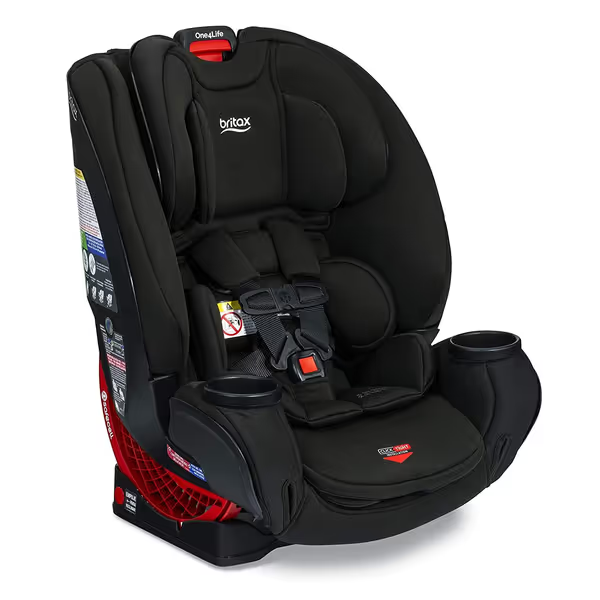
Britax One4Life ClickTight
The One4Life's 15-position headrest that moves with the harness addresses one critical geometry issue, but parents must verify that the shell depth remains adequate through each phase. Seats that appear spacious when rear-facing often become cramped when forward-facing due to compromised shell geometry.
How do multi-vehicle households navigate these complexities?
For families managing multiple vehicles (common among dual-income households), develop scenario matrices for multi-vehicle households that account for:
- Vehicle-specific installation challenges (sloped seats, limited tether access)
- Seat dimensions relative to each vehicle's interior
- Consistency of harness positioning across installations
Car seats that performed well in ADAC testing across varied installations (like the Cybex Sirona G i-Size with its clear installation indicators) reduce cognitive load when switching between vehicles. The service rating (40% of ADAC's score) matters immensely here. Complex installations increase misinstallation risk by 300% according to NHTSA data. If you switch cars often, consider our picks for car seats for multiple vehicles that install easily and consistently.
What geometry metrics actually predict long-term usability?
While crash performance is essential, seat geometry determines whether you'll actually use the seat correctly through multiple growth stages. Based on growth modeling across hundreds of installations:
- Harness height must exceed your child's shoulder height by 1" minimum when rear-facing
- Shell depth should accommodate torso length even when the child is reclined
- Seat footprint becomes critical when fitting three-across or in smaller vehicles
When I plotted my nephew's growth from infant to preschooler, the convertible seat that lasted longest wasn't the most expensive. It was the one where harness height and shell depth maintained proper geometry through his growth spurts. One seat continued working through multiple vehicles and carpools precisely because its geometry matched his actual physical dimensions rather than marketing timelines.
Making Evidence-Based Decisions
How can parents verify real-world performance beyond test ratings?
Supplement official test data with these practical verification steps:
- Test install in your actual vehicle: Bring the seat to your car before purchasing
- Check belt path geometry: Ensure seat belts route cleanly without twisting
- Measure actual shell depth: Use a tape measure from crotch to top of headrest
- Verify recline positions: Test with your child in actual sleeping positions
- Assess harness adjustability: Ensure you can maintain proper tension through growth
Most importantly, don't trust "up to" age claims. Instead, establish clear upgrade thresholds based on your child's measurements. For example, "transition from rear to forward facing when harness slots no longer sit at or below shoulders" rather than "at 2 years old."
When should you prioritize side impact protection over frontal?
While both matter, your vehicle's safety features should inform your emphasis. Newer vehicles with robust side curtain airbags (standard in most post-2018 models) provide significant supplemental protection during side impacts. In these cases, prioritize seats with excellent frontal crash performance and proper harness geometry, since the vehicle itself handles much of the side impact protection.
However, in older vehicles or smaller cars with limited side impact protection, seats with demonstrated side impact performance data (like those scoring 1.6 to 2.0 in ADAC's ergonomics/safety categories) become more critical. Focus on seats where the side padding extends high enough to protect your child's head in your specific vehicle configuration.
Final Considerations for Safety-Conscious Families
The most important crash performance metric isn't found in any test report: it is the consistent, correct installation you can maintain through your child's growth. Seats that require rethreading harnesses or complex adjustments see higher misuse rates as children grow, compromising both frontal and side impact protection. To minimize adjustment errors, look for no-rethread harness seats that keep fit consistent as your child grows.
Longevity lives in harness height, but safety endures through geometry that serves your child's actual physical dimensions, not marketing promises. As you evaluate car seat safety testing methodology, remember that the most valuable data comes from observing how a seat performs when installed correctly in your vehicle with your child.
Next steps for evidence-based selection:
- Create a scenario matrix for your specific vehicle(s) and seating positions
- Measure your child's current torso height and shoulder position
- Compare these metrics against actual shell depth and harness height measurements (not marketing claims)
- Prioritize seats with clear upgrade thresholds that align with your child's growth trajectory
For families ready to dive deeper, consult our guide to interpreting ADAC's detailed test reports, complete with vehicle-specific installation notes and growth modeling templates that help you project actual usable years based on your child's measurements rather than age ranges.
Related Articles

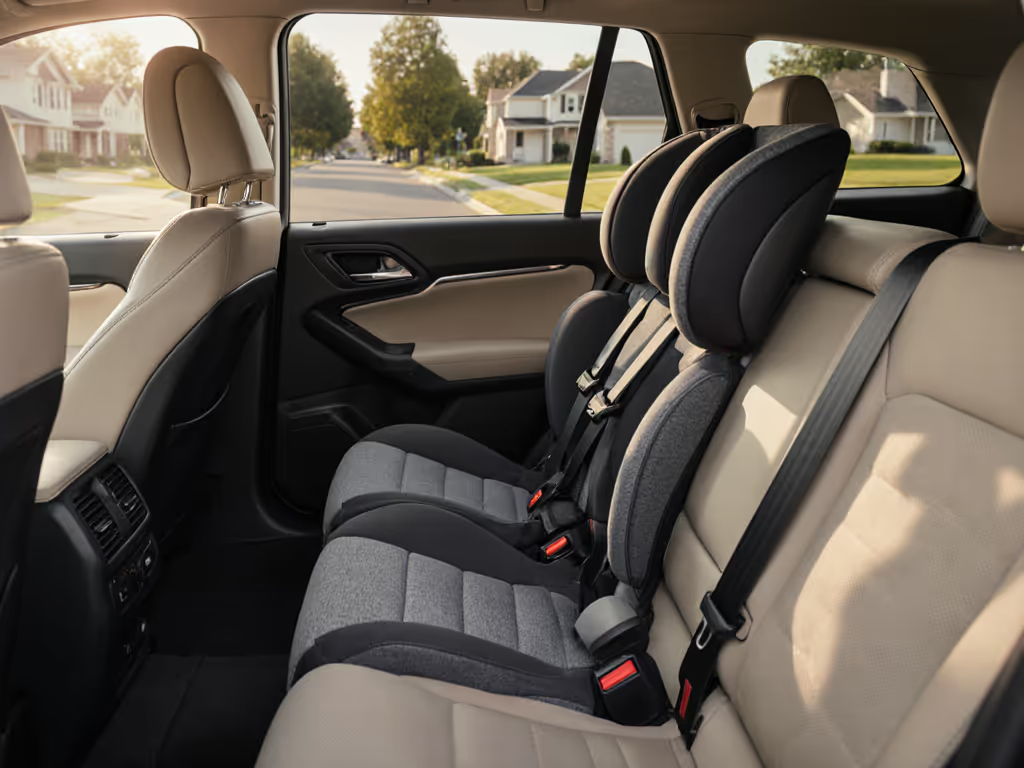
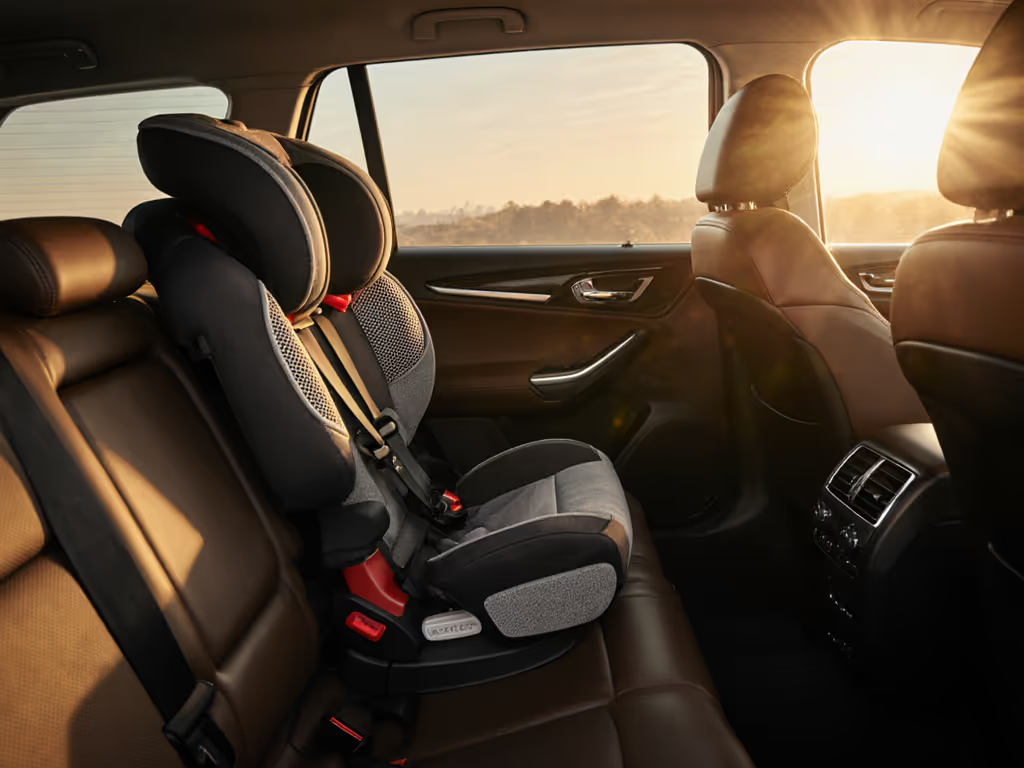
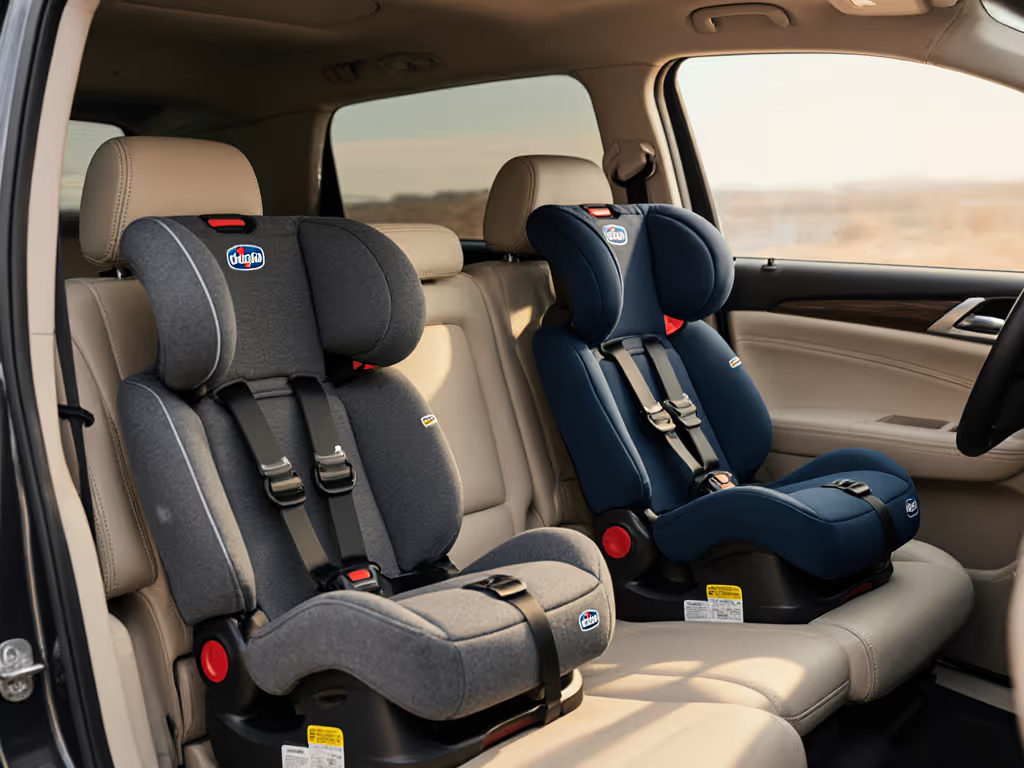
Evenflo Revolve360 Slim vs Chicco Fit360: Budget Rotating Car Seats
Compare the Evenflo Revolve360 Slim and Chicco Fit360 by installation ease, rotation, fit-to-child, space needs, and long-term value to find the best match for your routine. Evenflo favors three-across and booster longevity, while Chicco offers chemical-free fabrics, a taller harness height, and simpler daily adjustments.
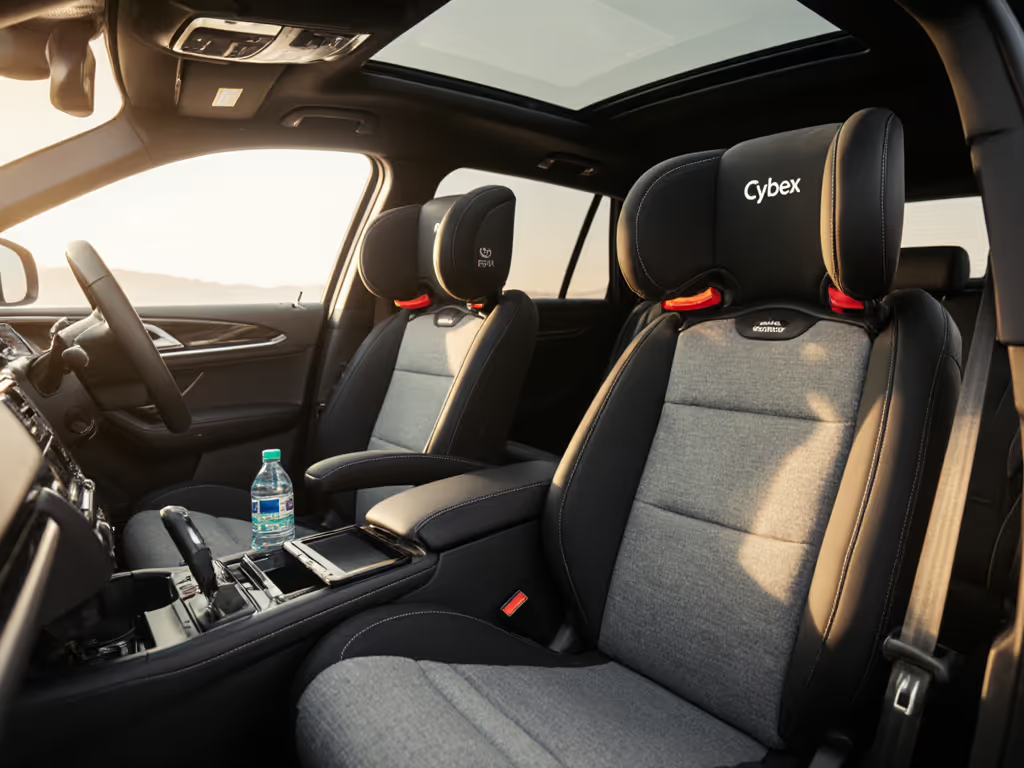
Cybex Callisto vs Nuna REVV: Daily Comfort Compared
Compare the Callisto G 360’s cooler airflow, deeper legroom, and broader age range with the REVV’s plush nap‑friendly support, natural fabrics, and no‑rethread harness. Get clear guidance by climate, sleep needs, and daily handling to pick the seat that keeps kids content and caregivers stress‑free.
